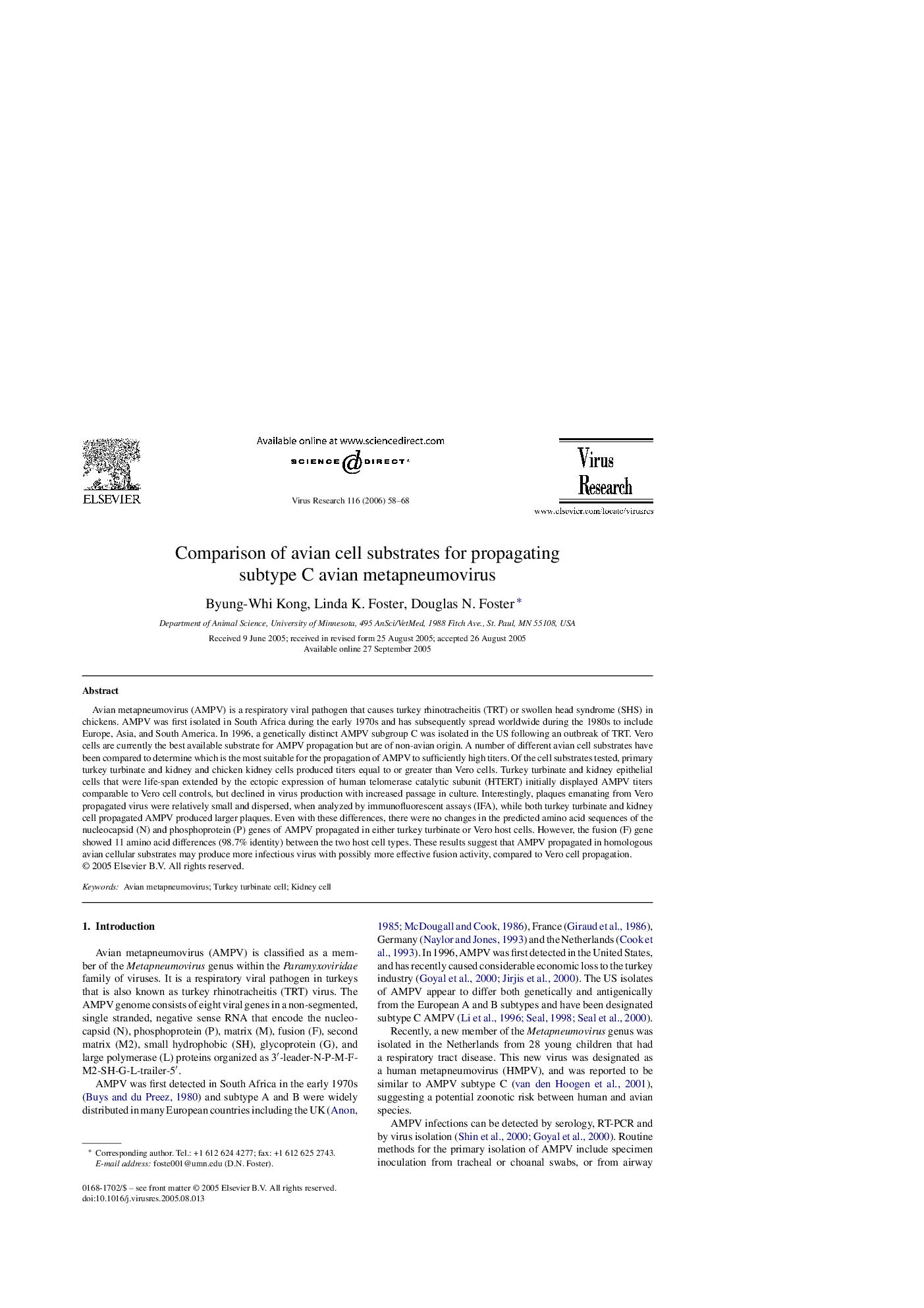| Article ID | Journal | Published Year | Pages | File Type |
|---|---|---|---|---|
| 3431444 | Virus Research | 2006 | 11 Pages |
Avian metapneumovirus (AMPV) is a respiratory viral pathogen that causes turkey rhinotracheitis (TRT) or swollen head syndrome (SHS) in chickens. AMPV was first isolated in South Africa during the early 1970s and has subsequently spread worldwide during the 1980s to include Europe, Asia, and South America. In 1996, a genetically distinct AMPV subgroup C was isolated in the US following an outbreak of TRT. Vero cells are currently the best available substrate for AMPV propagation but are of non-avian origin. A number of different avian cell substrates have been compared to determine which is the most suitable for the propagation of AMPV to sufficiently high titers. Of the cell substrates tested, primary turkey turbinate and kidney and chicken kidney cells produced titers equal to or greater than Vero cells. Turkey turbinate and kidney epithelial cells that were life-span extended by the ectopic expression of human telomerase catalytic subunit (HTERT) initially displayed AMPV titers comparable to Vero cell controls, but declined in virus production with increased passage in culture. Interestingly, plaques emanating from Vero propagated virus were relatively small and dispersed, when analyzed by immunofluorescent assays (IFA), while both turkey turbinate and kidney cell propagated AMPV produced larger plaques. Even with these differences, there were no changes in the predicted amino acid sequences of the nucleocapsid (N) and phosphoprotein (P) genes of AMPV propagated in either turkey turbinate or Vero host cells. However, the fusion (F) gene showed 11 amino acid differences (98.7% identity) between the two host cell types. These results suggest that AMPV propagated in homologous avian cellular substrates may produce more infectious virus with possibly more effective fusion activity, compared to Vero cell propagation.
